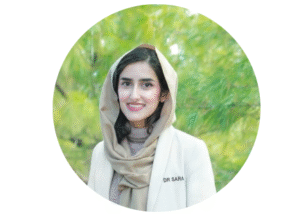Key takeaways
- Childhood cancer is a rare but treatable condition, with survival rates showing significant improvement with early diagnosis.
- Be on the lookout for common symptoms, such as unexplained bruising, persistent fever, unexplained weight loss, lumps, fatigue, headaches, and changes in vision.
- Genetic mutations often play a role in the causes, but more research is needed to understand the risk factors fully.
- It’s crucial to have long-term follow-up care, as survivors often deal with late health effects, including heart problems, hormone changes, or secondary cancers.
- Open communication and emotional support are key in helping kids and families navigate the journey.
What is childhood cancer?
Childhood cancer affects children from birth to age 19. It is a broader term that includes Paediatric cancer, which affects infants to children aged 14, and adolescent cancer, which impacts those aged 15 to 19. Cancer in children is rarer than in adults; however, it responds well to treatment. The most common types of cancer in children are acute leukemias (a type of blood cancer) and cancers of the brain and spinal cord.
Childhood cancer might be hard to identify because it is often mistaken for much less severe conditions. Here are some childhood cancer symptoms that can help your child receive the medical attention they need.
What symptoms in your child should you be careful about?
The following symptoms are some common symptoms of childhood cancer:
- Bruising: If your child gets bruises, bleeding, or rashes easily (especially without a clear traumatic cause) and they do not go away after the healing time has passed, it is advised to get medical attention.
- Unexplained lethargy: if your kid is tired all the time, has paleness, and has lost energy and interest in things, get a checkup.
- Weight loss: Ongoing unexplained weight loss despite maintaining a healthy lifestyle might indicate a serious condition such as cancer.
- Lumps or masses: If you notice any bumps or lumps on your child’s body, especially in areas like the neck, armpits, pelvis, chest, or belly, seek medical advice immediately.
- Whitening of pupils: If the child’s eyes are turning pale or you notice a whitish colour behind the pupil of the child’s eyes, seek medical advice. The medical term for this is leukocoria, a whitish reflection or spot in the pupil that is often prominent in photographs taken in flash, as opposed to the common red reflection. This occurs because the light is reflected off of something other than the normally red-reflecting retinal tissue.
- Headaches: If your child complains about frequent headaches, often accompanied by nausea or early-morning vomiting, seek your healthcare provider’s opinion.
- Infections: If your child experiences persistent infections and there is only a slight improvement in their health, seek immediate medical advice.
- Fever: If your child has recurring fevers without any signs of infection or flu, it could be a sign of a serious condition. Consult your healthcare provider.
- Swelling and pain: if your child shows signs of swelling or pain in their bones, joints, back, or legs, see a doctor.
- Blurry vision: If your child mentions blurry vision that happens or vision changes that won’t go away, get them checked out by a healthcare professional.
These symptoms might not seem like cancer since they are common in children and young kids; however, it’s advised to have them checked by a healthcare provider before they worsen. It is essential to note that these symptoms may be present in other non-cancer-related illnesses, but their severity, persistence, and unique combinations make them suspicious.
What is leading to cancer in children?
Research has shown that the leading cause of childhood cancer is cell mutation, which differs from that in adults. However, more research is necessary to identify the causes of childhood cancer and to raise awareness for prevention.
How does your doctor determine if your child has cancer?
Doctors and healthcare providers use the following tests to diagnose childhood cancer:
- Blood tests: Any irregularity in the child’s blood cells can indicate cancer
- Imaging tests: procedures like CT scans, MRI, PET scans, and ultrasound might reveal masses in the child’s organs or tissues.
- Biopsy: A pathologist examines samples of fluid or tissue under a microscope to look for cancer cells.
- Lumbar puncture: To check your child’s cerebrospinal fluid (CSF) for cancer cells or tumor markers.
- Genetics Test: designed to identify genetic mutations potentially linked to childhood cancer.
If your child is diagnosed with cancer, try not to worry. Childhood cancer is highly treatable (depending on the type and stage of cancer, and the treatment administered), and the body generally responds well to the treatment plan, especially when diagnosed early and treated in centers with advanced oncology departments.
What treatment plan might your doctor suggest?
Your healthcare provider will recommend that you follow the treatment plan.
- Chemotherapy is the most common treatment approach, where doctors use medications to destroy cancer cells. Treatment typically involves cycles of treatment days and rest periods.
- Radiation therapy, a machine is used to deliver radiation, which shrinks or destroys rapidly growing tumour cells.
- Stem Cell Transplant: In some cases, if your child is diagnosed with leukaemia or lymphoma, especially high-risk cases or relapsed disease after relatively conservative treatments, your doctor will likely recommend a stem cell transplant.
- Surgery: surgeons might recommend removing solid tumours entirely through surgery, or may need to perform other treatments alongside surgery (especially if the cancer has metastasized to other body parts).
- Immunotherapy and targeted therapy: Immunotherapy boosts your child’s immune system to fight cancer cells. Targeted therapy, on the other hand, targets specific weaknesses in cancer cells tied to certain gene mutations.
- Clinical trials are studies that test the effectiveness of new cancer treatments. Your doctor may suggest that your child participate in one to help improve their recovery. The doctor may also recommend participating in a clinical trial in addition to standard treatment. However, clinical trials typically have strict criteria for participation and cannot guarantee a successful outcome. Your doctor will help you decide whether enrolling your child in a clinical trial shows promise.
Conclusion:
Although childhood cancer is rare, it can have a severe impact if not caught and treated early. By recognizing warning signs such as frequent fevers, unexplained weight loss, swelling, or extreme fatigue, parents can seek medical help promptly. Advances in chemotherapy, radiation, surgery, and targeted therapies are boosting survival rates for childhood cancer, especially when treatment starts early. Regular medical check-ups and staying aware of symptoms are key to achieving better outcomes. If you notice any unusual or recurring health issues in your child, see a healthcare professional as soon as possible. An early diagnosis not only improves the chances of recovery but also helps ensure a healthier future for your child.
Frequently asked questions
What is the life expectancy of a childhood cancer survivor?
Although childhood cancer is often treatable, its long-term effects may still affect your child’s health down the line. A recent study found that childhood cancer survivors may live shorter lives than their peers. They’re also more likely to experience health issues as adults, such as heart problems, hormone-related conditions, and secondary cancers.
However, the risk isn’t the same for everyone. It largely depends on your child’s diagnosis and treatment. For instance, stem cell transplants can often lead to late effects. On the other hand, treatments involving surgery and low-dose chemotherapy are less likely to cause future problems.
Regardless, every childhood cancer survivor needs ongoing follow-up care. This includes regular check-ups with tests to detect any late effects of treatment.
How curable is childhood cancer?
Over 80% of children with cancer in high-income countries with good access to care respond well to treatment and reach remission, with low chances of relapse (dependent on type and stage of cancer). This figure is based on five-year survival rates for the most common childhood cancers.
For instance, 9 out of 10 kids with acute lymphoblastic leukemia achieve remission, which means they no longer show signs or symptoms of the cancer. It’s important to remember, however, that survival rates are estimates. They don’t account for the unique factors that will influence your child’s experience. That’s why it’s crucial to speak with your child’s healthcare provider about your child’s prognosis (likely future outcome). They can help you better understand this information.
How can I help my child?
Experts recommend being open and honest when talking to your child about cancer. These conversations can be challenging, but they believe kids with cancer benefit from knowing what’s going on and what’s being done to help. Older kids and teens usually appreciate straightforward answers. If your child is younger, consider asking a child life specialist for advice on how to discuss cancer with them. As your child’s caregiver, be their full-time advocate. You know them best, so follow their cues and offer the support they need every step of the way.
Why does my child have cancer?
So far, relatively few causes have been pinpointed for childhood cancers. It’s estimated that 4-8% of pediatric cancers happen in children with a known genetic predisposition. More than 100 genetic syndromes linked to a higher risk of childhood cancer are already known. As research in areas like genomics continues to uncover rare mutations in cancer genes, this percentage may increase. Some studies suggest that up to one in four kids and teens who have had cancer may have a genetic predisposition.
Why don't we have a cure for childhood cancer yet?
Childhood cancer is actually a group of over 12 primary types and 100 subtypes. There’s no one-size-fits-all cure for all childhood cancers, and no single treatment works for every case. But thanks to the efforts of research teams, doctors, and healthcare providers, we’re making progress in improving medical care for kids.


